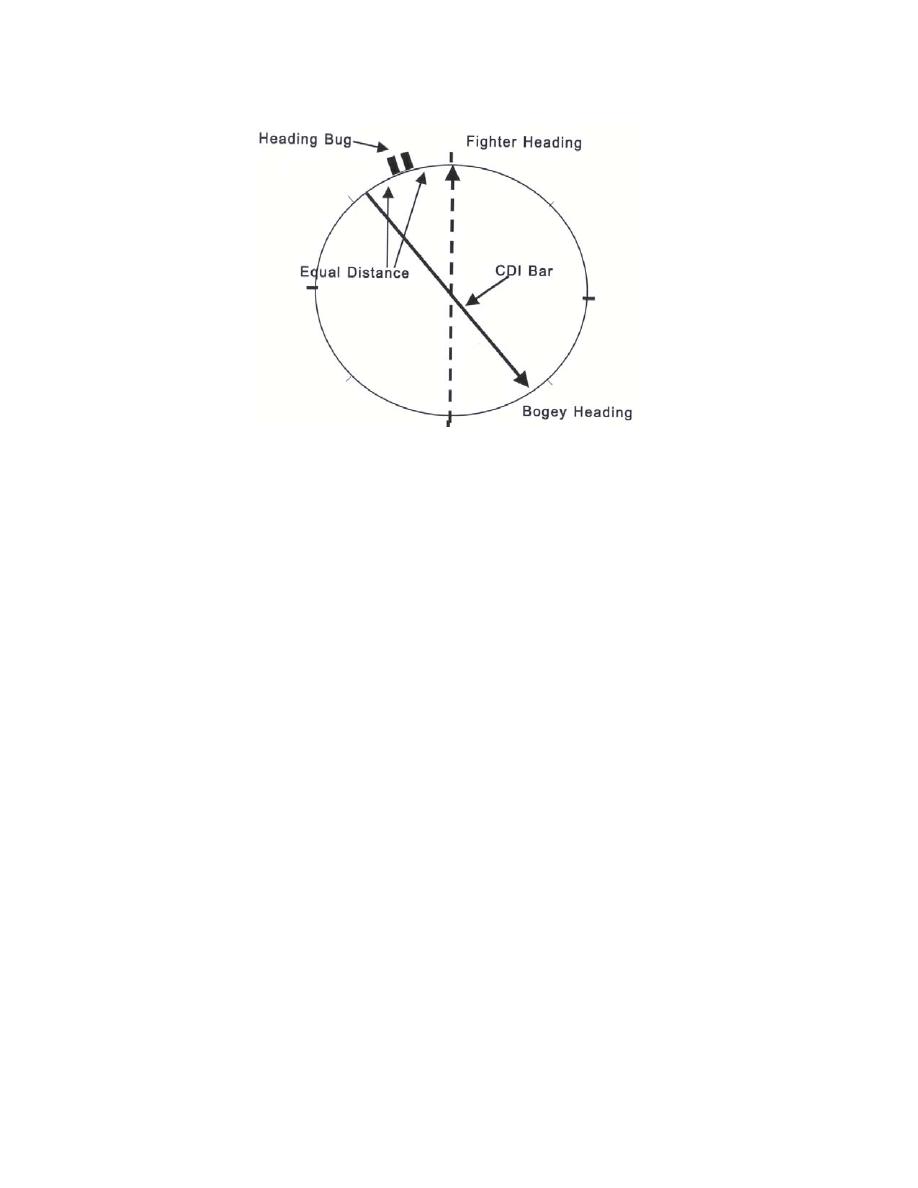 |
|||
|
|
|||
|
|
|||
| ||||||||||
|
|  INTERCEPT PROCEDURES TEXTBOOK
Figure 1
This method is useful for visualization of the intercept. However, the timing of the intercept
does not make it practical to use when completing an intercept. Therefore, it is highly
discouraged for use in the simulator or during intercept flights.
Displacement Turn
Once target aspect has been determined and the intercept is under control (i.e. the bogey has
stopped drifting), the fighter needs to execute a displacement turn at the appropriate range.
For illustration purposes, assume that target aspect is 20R and the fighter is on a collision
heading of 350. At 12 nm, all collision course corrections will stop, and at 10 nm the bogey will
be displaced to 30R AO. The fighter needs to turn until the bogey bearing call is 30 right of the
nose. Using the heading bug will help because it will stay on the last commanded position to
give a visual cue of where 30 right is located. Use of the 45 fiducial is another guide for the
weapons officer.
The "steady up" call should be led by a few degrees, just as in a normal DT. The task is to
place the bogey bearing call in a certain position on the top portion of the BDHI, exactly as
would be done if the bogey were on the scope.
93
|
|
Privacy Statement - Press Release - Copyright Information. - Contact Us |